By Catherine A. Cardno, Ph.D.
The striking design of a city within a building intended to be built within an industrial harbor in Esbjerg, Denmark, has been released.
Designed by the architectural design studio Bjarke Ingels Group, commonly known as BIG, the 90,573 sq m footprint Esbjerg Strand building — to be built around a central parkland — will create a campus for Education Esbjerg.
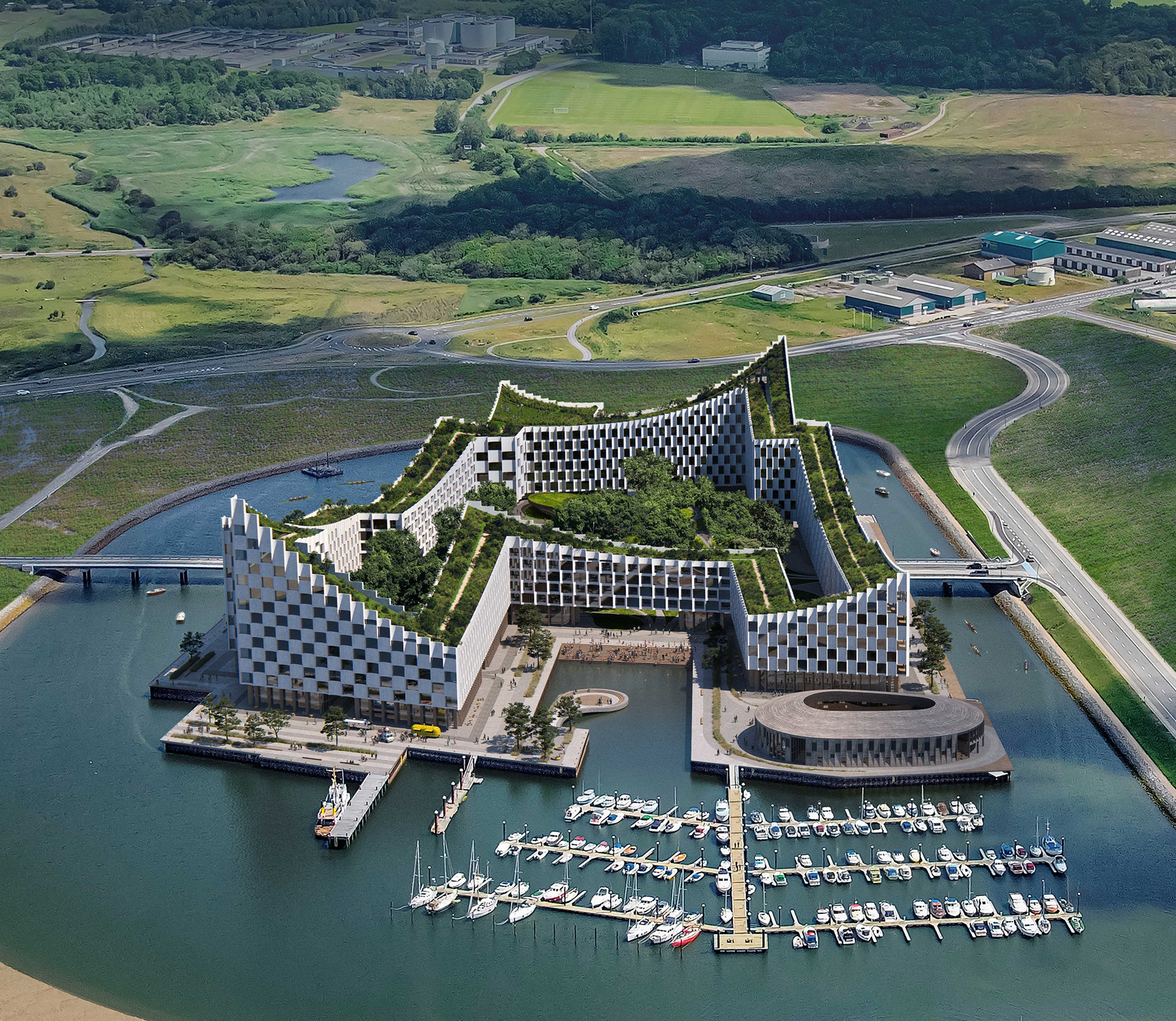
A perimeter building of various heights — with an accessible green roof boasting a 1 km walking loop — will surround a lush central park, protecting it from wind and noise from the harbor.
The building will offer exterior views of the harbor, marina, lagoon, and sea and interior views of the parkland.
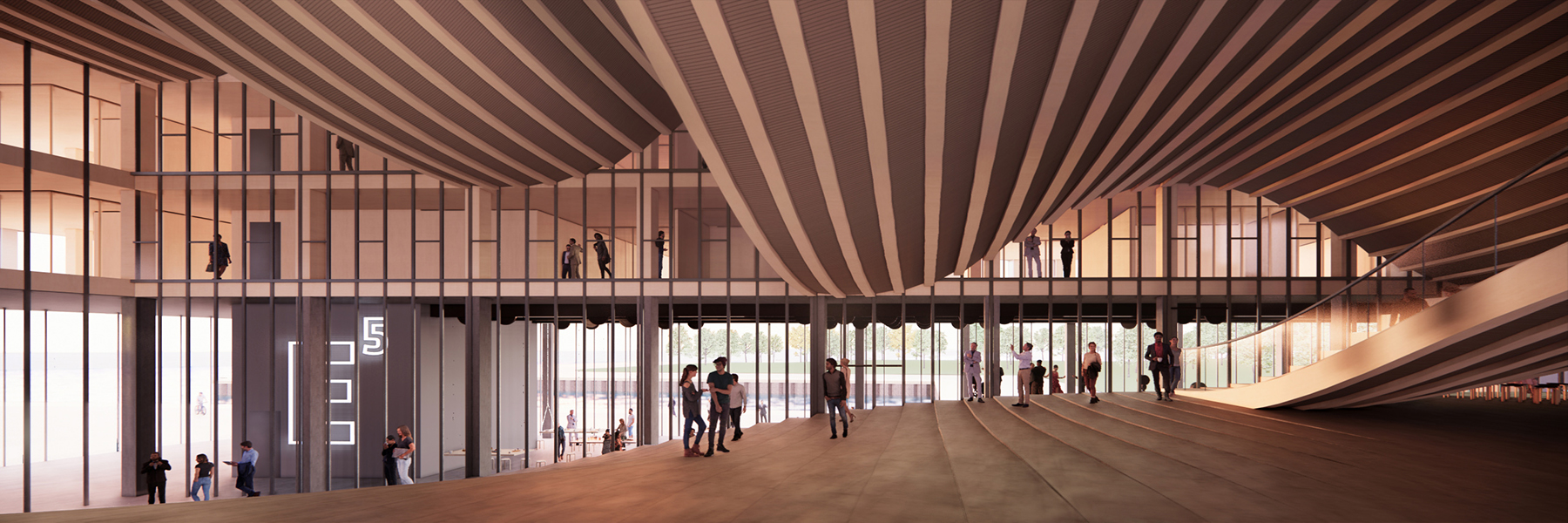
The bulk of the building’s space will be located 7 m above the island’s ground level to protect it from floods. This will be accomplished with an open-plan ground floor that will also offer a warm welcome to visitors and residents with undulating roofs detailed with wood.
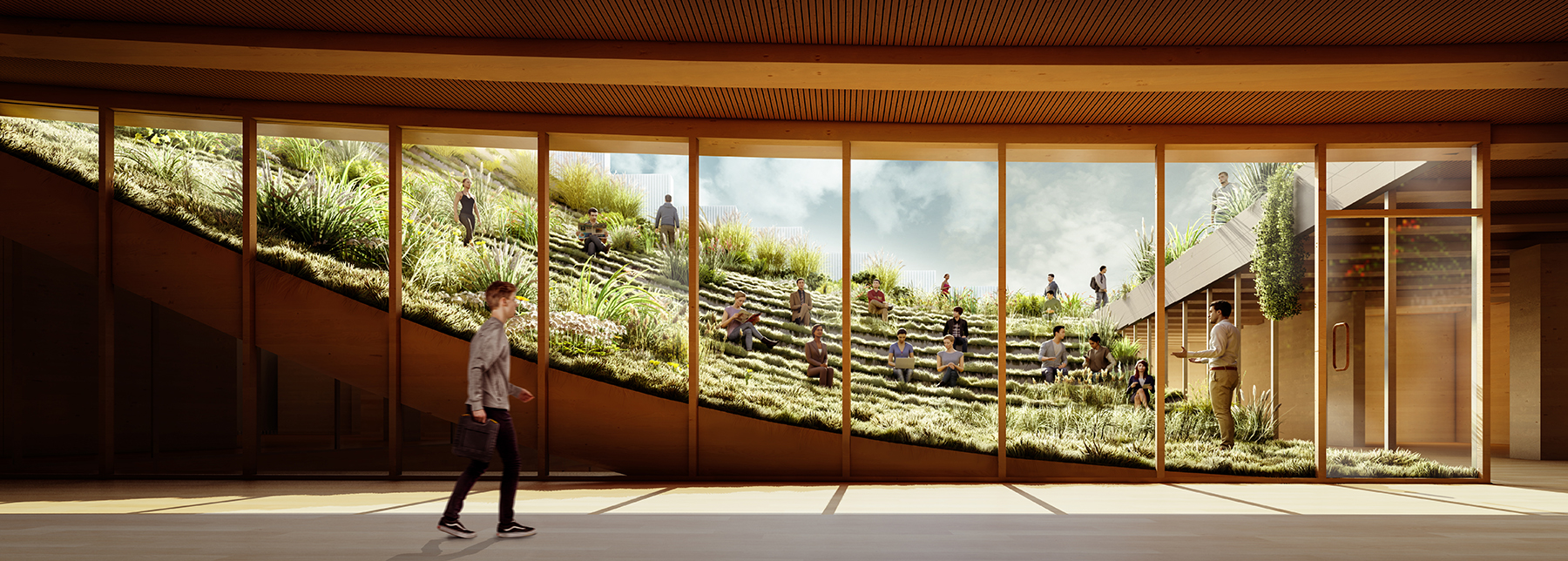
The glass walls within the building’s ground floor will also offer views of the terraced gardens.
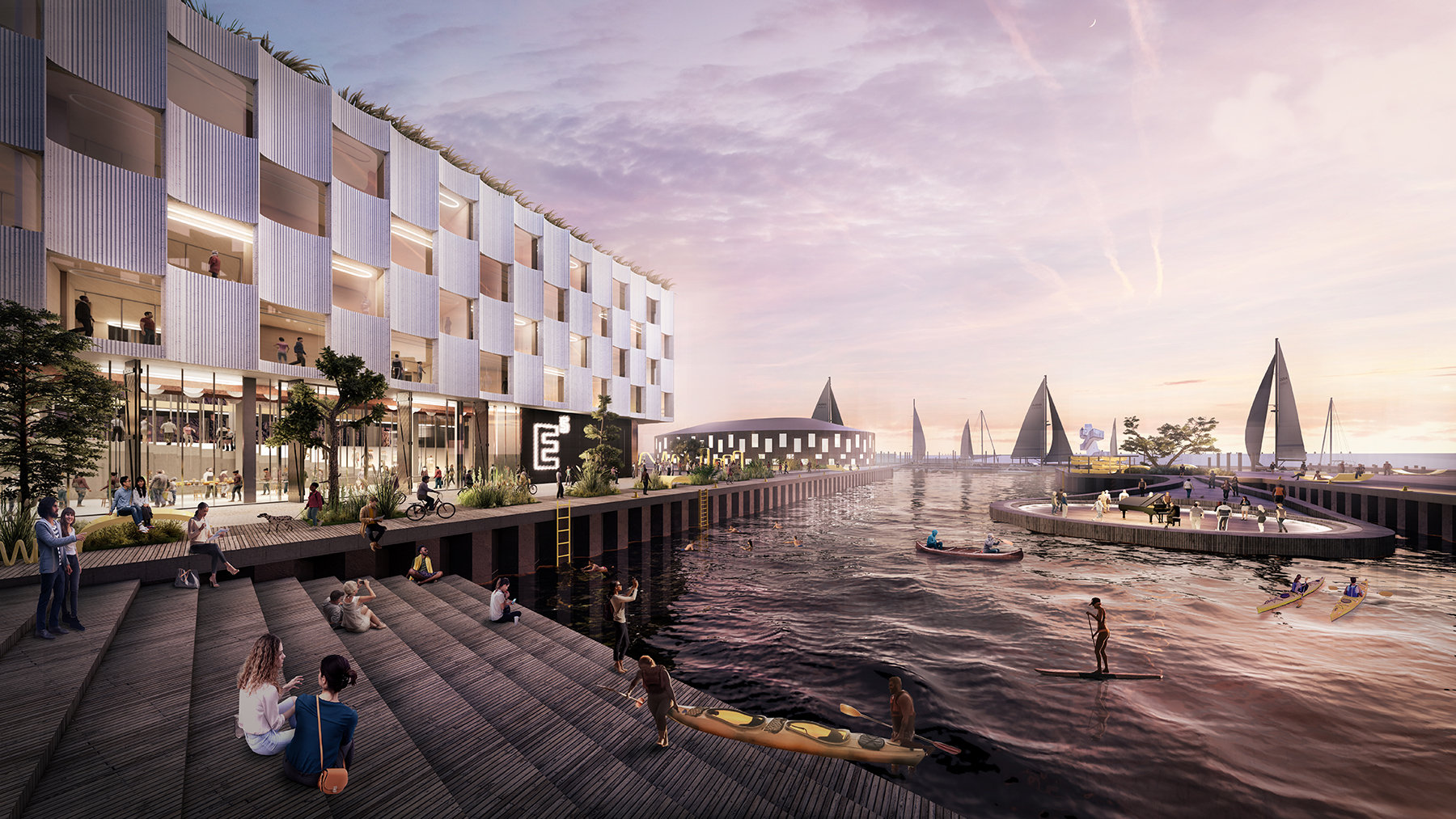
The ground floor will be perforated with accessways that will connect the waterfront promenade to the central park area visually and physically.
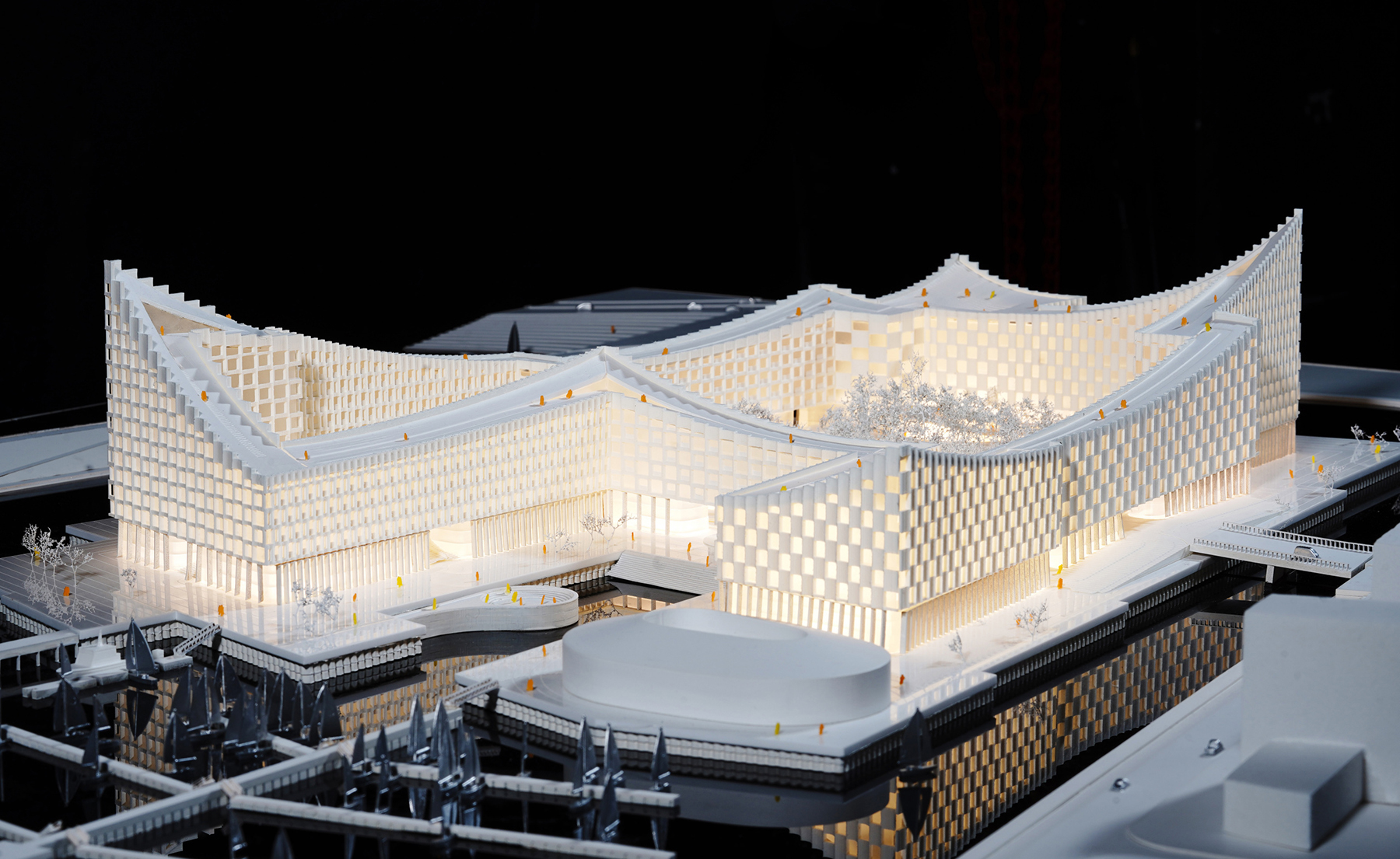
The building heights have been optimized to minimize noise from the harbor, create protected areas from wind at ground level and on the rooftop and maximize the complex’s sun exposure and the building’s views to the sea and park.
The tallest sections of the building will be seven stories in height.
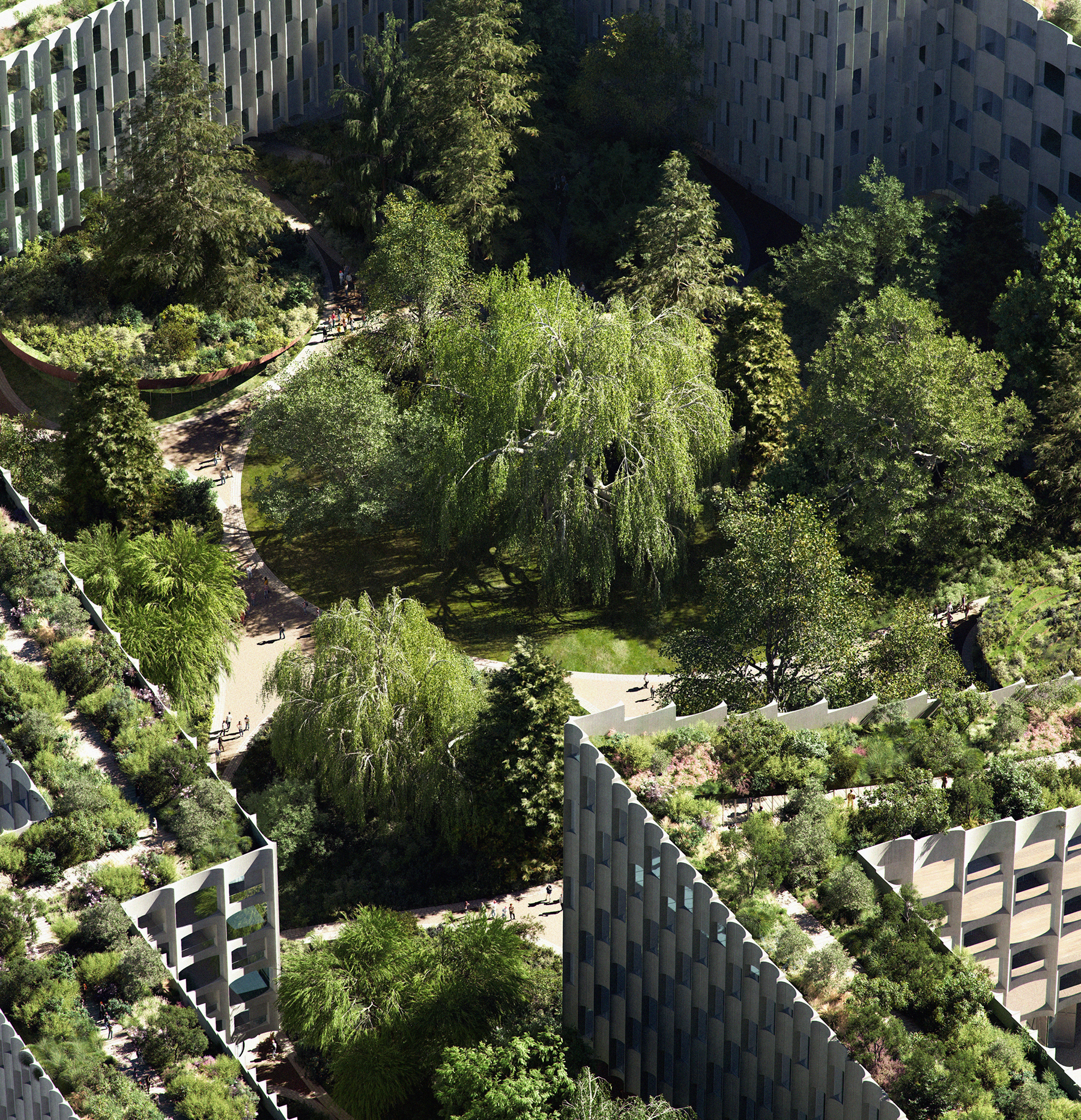
The enclosed park is intended to offer a space for relaxation and contemplation for the educational facility despite the extreme climatic conditions of the coast. The design team conceives of it as a peaceful oasis that will offer a contrast to the industrial harbor.
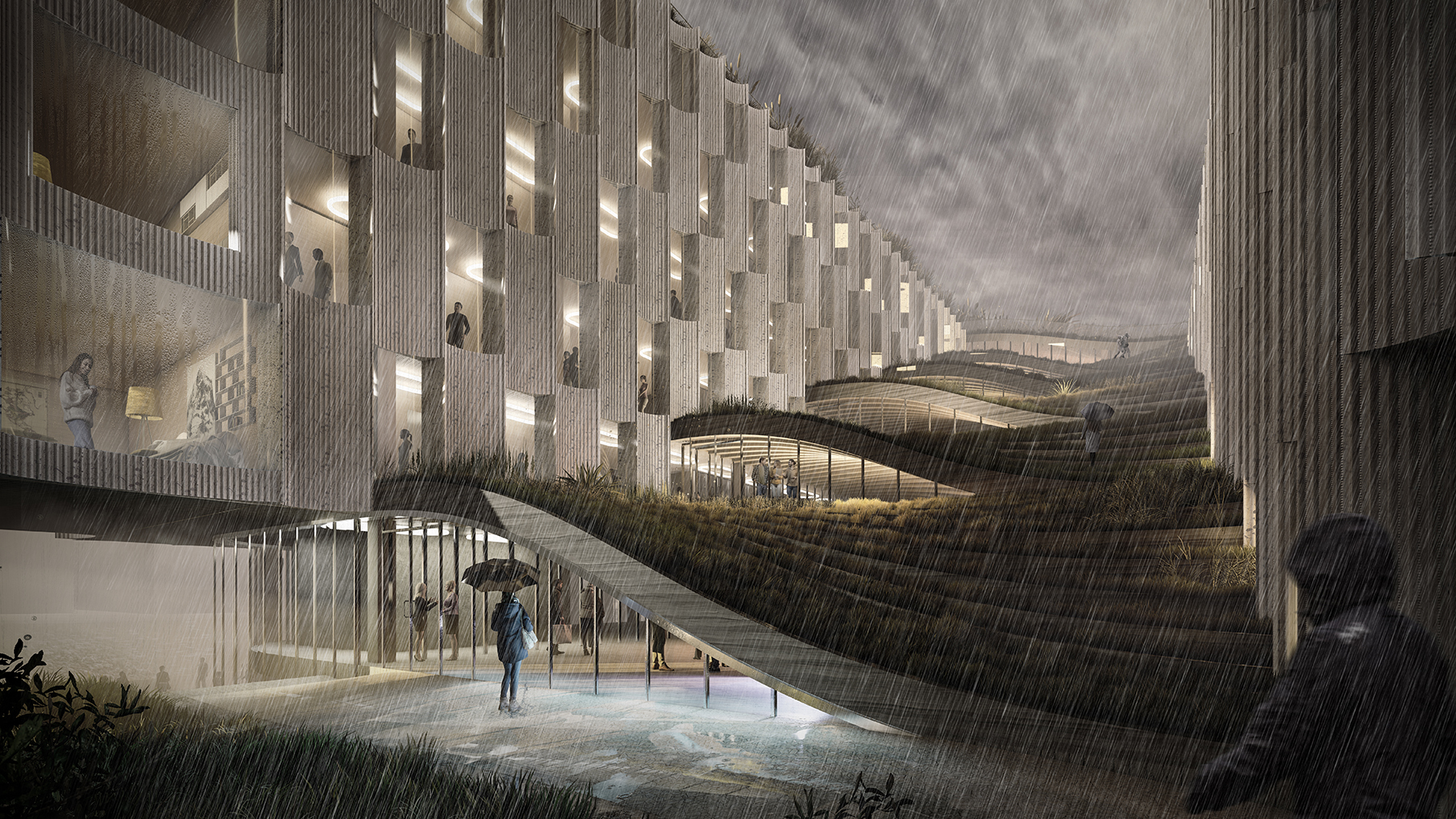
Within the central park portion of the island, terraced green roofs will connect buildings and offer shelter to walkers as well as natural views to enjoy.
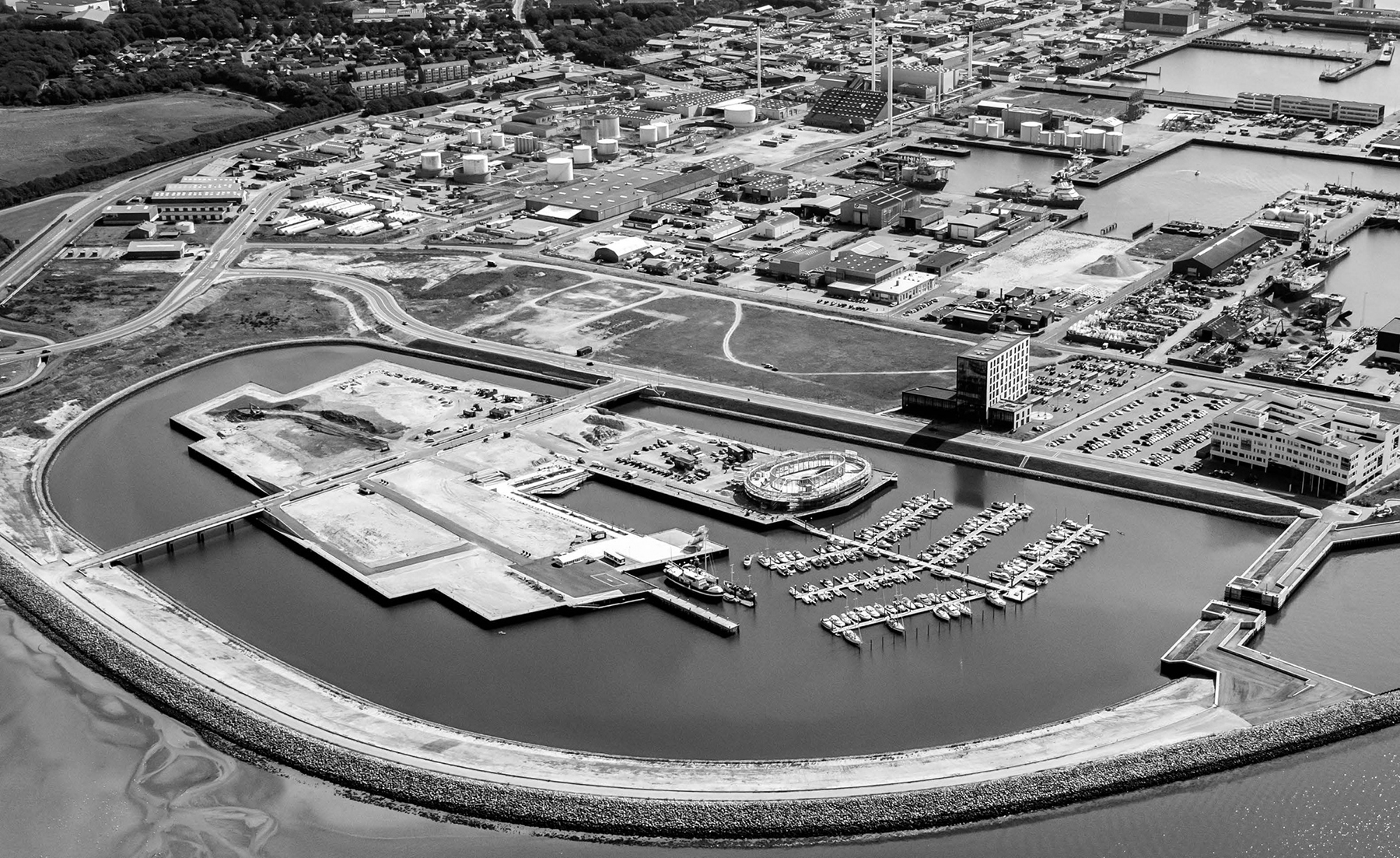
The existing human-made island will be fully utilized with the new design, re-creating the harbor area as an educational center with sustainable features. The project is intended to set an example for sustainability-best-practices construction in Esbjerg and the country of Denmark as a whole, according to the design team.
The master plan’s design has also been formulated to achieve 11 of the United Nations’ 17 Sustainable Development Goals, according to the design team. They are:
- Quality education (No. 4) that is flexible beyond geographic limits and attracts and retains talented people.
- Clean water and sanitation (No. 6).
- Affordable and clean energy (No. 7) through a site powered by renewables.
- Industry, innovation, and infrastructure (No. 9) by redeveloping the harbor with a new identity beyond industry.
- Reduced inequalities (No. 10) with multigenerational urban spaces for everyone.
- Sustainable cities and communities (No. 11) by developing an innovation hub for Denmark.
- Responsible consumption and protection (No. 12) through recycling and biodegradable material choices.
- Climate action (No. 13) by embracing the potential for flooding and activating public space and reducing cardon dioxide and mobility emissions.
- Life below water (No. 14) by protecting and enhancing marine habitat.
- Life on land (No. 15) by enhancing biodiversity and local spaces.
- Partnership for goals (No. 17).
Global architecture and engineering consultancy Ramboll Group A/S, branding company Voluntas, and analytics company Quantum collaborated with BIG on the project.



